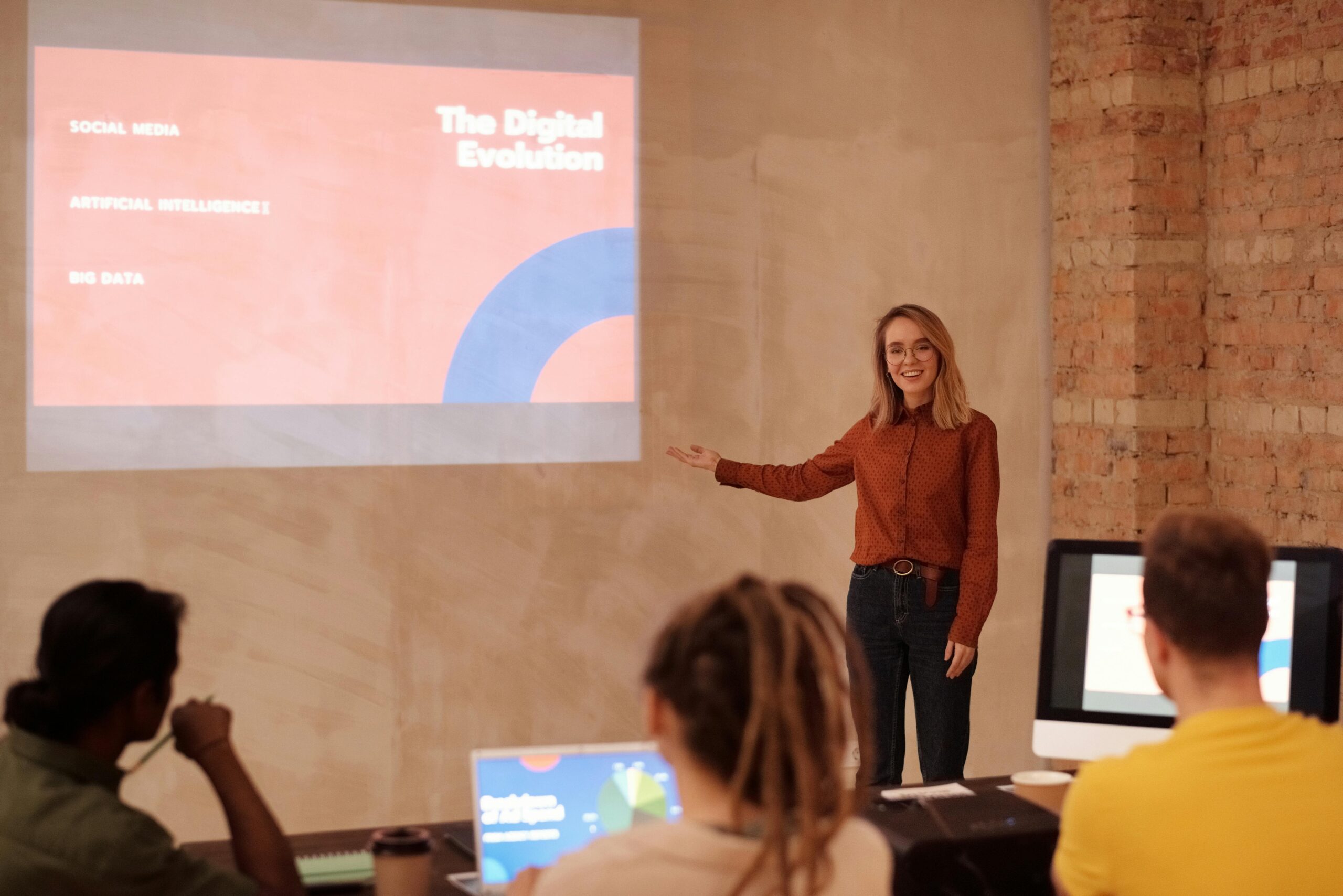Human-centered technology frameworks are transforming how we interact with digital products, placing real people at the heart of innovation and design decisions.
🎯 Understanding the Human-Centered Paradigm Shift
The technology landscape has undergone a dramatic transformation over the past decade. Where once features and functionality ruled supreme, today’s successful digital products prioritize the human experience above all else. This fundamental shift represents more than just a trend—it’s a complete reimagining of how we conceptualize, design, and deploy technological solutions.
Human-centered technology frameworks emerged from the recognition that brilliant engineering alone doesn’t guarantee user adoption or satisfaction. Even the most sophisticated algorithms and cutting-edge features fall flat when they fail to address genuine human needs, behaviors, and limitations. This realization has sparked a revolution in product development, where empathy and user research have become as critical as coding and architecture.
Organizations implementing these frameworks report significant improvements across multiple metrics. User satisfaction scores climb, abandonment rates decrease, and engagement deepens organically. More importantly, products built on human-centered principles tend to solve real problems rather than creating elaborate solutions searching for problems to address.
🧠 Core Principles Driving Human-Centered Design
At the foundation of human-centered technology frameworks lie several interconnected principles that guide every decision throughout the development lifecycle. Understanding these core tenets provides the blueprint for creating genuinely transformative user experiences.
Empathy as the Starting Point
Every successful human-centered approach begins with deep empathy for the end user. This means moving beyond demographic data and surface-level personas to truly understand the context, motivations, frustrations, and aspirations of real people. Designers and developers must immerse themselves in the user’s world, observing actual behaviors rather than relying solely on what people say they want.
Empathy mapping exercises, ethnographic research, and contextual inquiries allow teams to build genuine understanding. This foundation ensures that every subsequent design decision connects back to authentic human needs rather than assumptions or internal preferences.
Iterative Development and Continuous Learning
Human-centered frameworks embrace iteration as a strength rather than a weakness. Rather than pursuing perfection in isolation, these approaches advocate for rapid prototyping, testing, learning, and refinement. Each cycle brings teams closer to solutions that genuinely resonate with users.
This iterative philosophy acknowledges that we cannot predict every user need upfront. Instead, we create hypotheses, test them with real users, gather feedback, and adapt accordingly. This continuous learning loop prevents teams from investing enormous resources into directions that may not serve users effectively.
Inclusive Design for Diverse Populations
True human-centered technology considers the full spectrum of human diversity. This includes not only different abilities and disabilities but also varied cultural contexts, language preferences, technological literacy levels, and access to resources.
Inclusive design practices ensure that products remain accessible and valuable to the broadest possible audience. This approach doesn’t just serve ethical imperatives—it also expands market reach and often uncovers innovative solutions that benefit everyone, not just specific user segments.
💡 Frameworks and Methodologies Reshaping User Experience
Several established frameworks have emerged as powerhouses in the human-centered technology space. Each brings unique perspectives and tools while sharing the common goal of placing humans at the center of technological innovation.
Design Thinking: From Problem to Solution
Design thinking has become perhaps the most widely recognized human-centered framework. Popularized by IDEO and Stanford’s d.school, this approach structures the creative problem-solving process into distinct phases: empathize, define, ideate, prototype, and test.
What makes design thinking powerful is its non-linear nature. Teams can move backward and forward through phases as learning emerges. This flexibility allows for course corrections before significant resources have been committed to flawed directions.
Organizations across industries—from healthcare to finance to education—have adopted design thinking to tackle complex challenges. The framework’s versatility stems from its focus on understanding human needs rather than immediately jumping to technological solutions.
Lean UX: Reducing Waste, Maximizing Value
Lean UX brings principles from lean manufacturing into the user experience domain. This framework emphasizes rapid experimentation, validated learning, and eliminating activities that don’t directly contribute to understanding or serving users better.
Rather than creating extensive documentation upfront, Lean UX advocates for collaborative design sessions, quick prototypes, and immediate user testing. Teams work in tight cycles, measuring outcomes against specific hypotheses, and pivoting quickly when data suggests alternative approaches.
This methodology particularly suits fast-paced startup environments or organizations seeking to become more agile. The emphasis on evidence over opinion helps teams make objective decisions about which features and approaches truly deliver value.
Jobs to Be Done: Understanding Motivation
The Jobs to Be Done framework shifts focus from user demographics to the fundamental “jobs” people are trying to accomplish. This perspective recognizes that people don’t buy products for their features—they “hire” them to complete specific tasks or achieve particular outcomes.
By mapping these jobs, teams gain clarity about what truly drives user behavior and decision-making. This understanding enables more strategic feature prioritization and helps identify opportunities that competitors may have overlooked.
Companies using Jobs to Be Done often discover that their real competition comes from unexpected places—not just direct rivals but alternative solutions users currently employ to accomplish the same jobs.
🚀 Implementing Human-Centered Approaches in Real-World Projects
Theoretical frameworks become valuable only when translated into practical implementation. Organizations successfully deploying human-centered approaches share common strategies and tactics that bridge the gap between philosophy and execution.
Building Cross-Functional Collaboration
Human-centered design cannot exist in silos. Effective implementation requires breaking down traditional barriers between designers, developers, product managers, marketers, and business stakeholders. Cross-functional teams bring diverse perspectives that enrich problem understanding and solution generation.
Regular collaborative sessions—design studios, sprint planning meetings, retrospectives—create shared ownership of user experience outcomes. When engineers understand the user research behind feature decisions, they often contribute valuable technical insights that improve both feasibility and impact.
Establishing User Research Cadences
Consistent connection with real users distinguishes truly human-centered organizations from those merely paying lip service to the concept. Successful teams establish regular research cadences rather than treating user input as a one-time checkpoint.
This might include weekly usability testing sessions, monthly user interviews, quarterly survey deployments, or ongoing analytics review meetings. The specific methods matter less than the consistency and genuine integration of insights into decision-making processes.
Creating Safe Spaces for Experimentation
Human-centered approaches require psychological safety—environments where teams can propose unconventional ideas, test hypotheses that might fail, and learn from mistakes without fear of punishment. Leadership plays a critical role in establishing this culture.
Organizations that celebrate learning and intelligent risk-taking tend to see more innovative solutions emerge. When teams know that thoughtful experiments are valued even when results don’t meet initial expectations, they’re more willing to challenge assumptions and explore new territories.
📊 Measuring Success Beyond Traditional Metrics
Human-centered frameworks demand rethinking how we measure success. While traditional business metrics remain important, they provide an incomplete picture of whether technology truly serves human needs effectively.
Qualitative Indicators of User Experience Quality
Numbers tell part of the story, but qualitative feedback reveals the deeper narrative. User interviews uncover emotional responses, pain points, and delight moments that quantitative data alone cannot capture. Session recordings show where users struggle, even when they eventually complete tasks successfully.
Successful organizations balance quantitative and qualitative insights, recognizing that high completion rates mean little if users feel frustrated throughout the journey. The most valuable products create positive emotional connections alongside functional utility.
Long-Term Engagement Versus Short-Term Conversion
Human-centered approaches often prioritize sustainable engagement over short-term conversion optimization. While dark patterns might temporarily boost specific metrics, they erode trust and damage long-term relationships with users.
Frameworks that genuinely serve user needs tend to produce more modest short-term gains but significantly superior long-term outcomes. Users become advocates rather than merely customers, and organic growth through recommendations supplements paid acquisition efforts.
🌟 Real-World Success Stories and Transformations
Theory comes alive through concrete examples of organizations that have successfully implemented human-centered technology frameworks and reaped substantial benefits.
Healthcare Innovation Through Patient-Centered Design
Healthcare providers implementing human-centered frameworks have revolutionized patient experiences. By observing actual patient journeys—from appointment scheduling through treatment and follow-up—design teams identified friction points invisible from administrative perspectives.
Solutions emerged that simplified communication between providers and patients, reduced appointment no-shows through better reminder systems, and created more intuitive patient portals. These improvements didn’t just enhance satisfaction scores; they contributed to better health outcomes through improved adherence and engagement.
Financial Services Becoming More Accessible
Traditional banking interfaces often reflected internal organizational structures rather than how customers actually thought about their finances. Human-centered redesigns organized information around customer goals—saving for specific objectives, managing daily spending, planning for retirement—rather than account types.
By conducting extensive research with diverse user groups, including those with limited financial literacy, institutions created educational content embedded naturally within transactional interfaces. This approach empowered users to make better financial decisions rather than simply executing transactions.
Educational Technology Serving Actual Learning Needs
Education technology companies applying human-centered frameworks discovered that their assumptions about effective learning often diverged from reality. By observing students and teachers in actual classroom contexts, they identified opportunities to support collaboration, provide adaptive feedback, and reduce administrative burden on educators.
Products evolved from content delivery systems to comprehensive learning ecosystems that addressed the social, emotional, and logistical dimensions of education alongside academic content. Student engagement and learning outcomes improved measurably.
🔮 The Future of Human-Centered Technology
As technology continues evolving at breakneck speed, human-centered frameworks become even more critical. Emerging technologies like artificial intelligence, augmented reality, and voice interfaces present both tremendous opportunities and significant risks if deployed without careful consideration of human impact.
Ethical AI and Algorithmic Transparency
Human-centered approaches to artificial intelligence prioritize transparency, fairness, and user control. Rather than treating AI as a black box that makes inscrutable decisions, these frameworks advocate for explainable AI that helps users understand why systems make specific recommendations or decisions.
Designers working with AI must consider not just technical performance but also the social implications of automated decision-making. This includes actively working to identify and mitigate bias in training data and algorithms, ensuring that AI systems serve diverse populations equitably.
Privacy by Design in an Connected World
Human-centered frameworks increasingly emphasize privacy as a fundamental user need rather than merely a compliance requirement. This means building privacy protections into systems from the beginning rather than bolting them on as afterthoughts.
Users increasingly expect control over their personal data, transparency about how information is used, and options to limit data collection. Technologies that respect these expectations while still delivering value will earn user trust and loyalty in ways that data-hungry alternatives cannot.
🎨 Cultivating Human-Centered Mindsets Across Organizations
Frameworks and methodologies provide structure, but lasting transformation requires cultural shifts throughout organizations. Developing truly human-centered mindsets involves changing how teams think, communicate, and make decisions at every level.
Leadership Commitment and Resource Allocation
Human-centered approaches require genuine commitment from organizational leadership. This means allocating sufficient time for research and iteration, hiring professionals with relevant expertise, and protecting teams from pressure to skip user-centered processes when deadlines loom.
Leaders must also model human-centered thinking in their own decision-making, asking questions about user impact, seeking diverse perspectives, and acknowledging uncertainty rather than demanding premature certainty.
Continuous Learning and Skill Development
The field of human-centered design continues evolving, with new tools, techniques, and insights emerging regularly. Organizations committed to this approach invest in ongoing education for their teams—workshops, conferences, online courses, and dedicated time for learning and experimentation.
Cross-training also proves valuable, with engineers learning research techniques, designers understanding technical constraints, and business stakeholders developing empathy skills. This shared knowledge base enables more productive collaboration and better collective decision-making.
⚡ Overcoming Common Implementation Challenges
Despite compelling benefits, organizations often encounter obstacles when implementing human-centered frameworks. Recognizing these challenges and developing strategies to address them increases the likelihood of successful adoption.
Balancing Speed with Thoroughness
One frequent tension involves the perceived conflict between human-centered processes and delivery speed. Stakeholders sometimes view research and iteration as delays rather than investments that prevent more costly mistakes later.
Successful teams address this by demonstrating how user research actually accelerates development by preventing wasted effort on features users don’t value. They also adapt methodologies to project constraints, using rapid research techniques when time is limited rather than abandoning user-centered approaches entirely.
Navigating Organizational Resistance
Established organizations often have entrenched processes and power structures that resist human-centered approaches. Product decisions may historically have been made by the highest-paid person’s opinion rather than user evidence.
Change agents within these organizations achieve success by starting small—demonstrating value through pilot projects, building coalitions with sympathetic stakeholders, and presenting compelling evidence of improved outcomes. Gradual adoption often proves more sustainable than attempting wholesale transformation overnight.

🌈 Creating Lasting Impact Through Human-Centered Innovation
Human-centered technology frameworks represent far more than a passing trend or superficial design philosophy. They embody a fundamental recognition that technology exists to serve human needs, not the reverse. As digital products become increasingly integrated into every aspect of our lives, the imperative to design with genuine human understanding becomes ever more critical.
Organizations that embrace these frameworks don’t just create better products—they build stronger relationships with users, establish more sustainable competitive advantages, and contribute to a technological landscape that enhances rather than diminishes human flourishing. The revolution in user experience isn’t about flashier interfaces or more features; it’s about technology that genuinely understands and serves the humans it was created for.
The path forward requires commitment, patience, and willingness to challenge conventional wisdom. It demands that we listen more than we assume, test more than we theorize, and iterate more than we perfect. For organizations willing to make this investment, the rewards extend far beyond improved metrics—they encompass the profound satisfaction of creating technology that makes people’s lives genuinely better.
Toni Santos is a digital culture researcher and emotional technology writer exploring how artificial intelligence, empathy, and design shape the future of human connection. Through his studies on emotional computing, digital wellbeing, and affective design, Toni examines how machines can become mirrors that reflect — and refine — our emotional intelligence. Passionate about ethical technology and the psychology of connection, Toni focuses on how mindful design can nurture presence, compassion, and balance in the digital age. His work highlights how emotional awareness can coexist with innovation, guiding a future where human sensitivity defines progress. Blending cognitive science, human–computer interaction, and contemplative psychology, Toni writes about the emotional layers of digital life — helping readers understand how technology can feel, listen, and heal. His work is a tribute to: The emotional dimension of technological design The balance between innovation and human sensitivity The vision of AI as a partner in empathy and wellbeing Whether you are a designer, technologist, or conscious creator, Toni Santos invites you to explore the new frontier of emotional intelligence — where technology learns to care.




